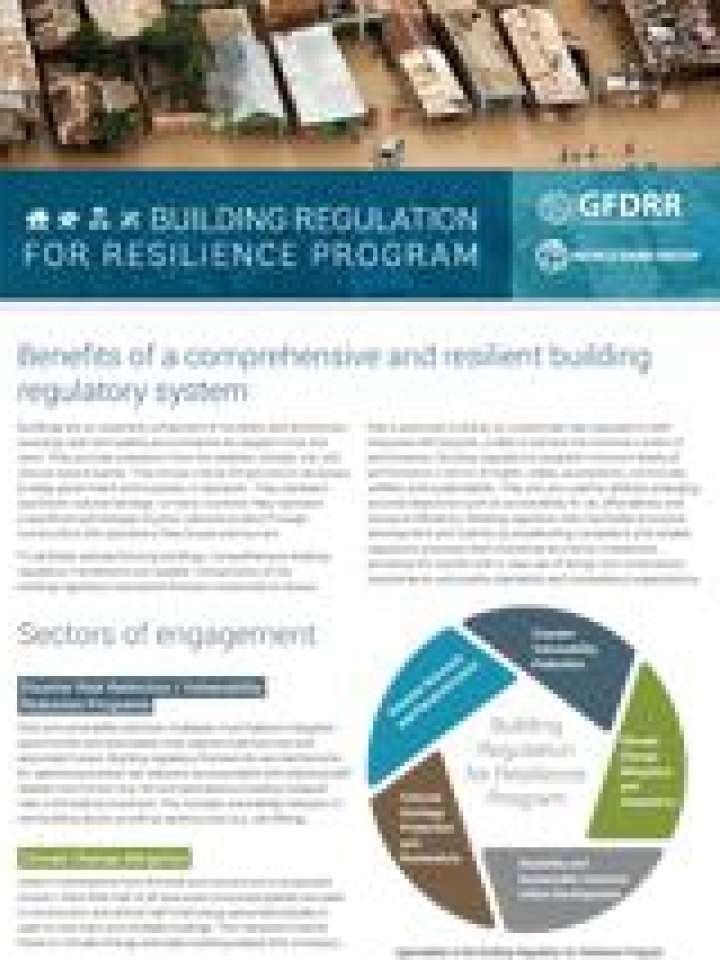Building regulation for resilience program brief
Buildings are an essential component of societies and economies, providing safe and healthy environments for people to live and work. To facilitate well-performing buildings, comprehensive building regulatory frameworks are needed. Components of the building regulatory framework function holistically to assure that a particular building, on a particular site, exposed to well-characterized hazards, is able to achieve the minimum levels of performance. Building regulations establish minimum levels of performance in terms of health, safety, accessibility, community welfare and sustainability. They are also used to address emerging societal objectives such as accessibility for all, affordability and resource ef ciency. Building regulation also facilitates economic development and stability by establishing competent and reliable regulatory practices that incentivize economic investment, providing the market with a clear set of design and construction requirements and quality standards and competency expectations.
This program brief provides a quick overview of the Building Regulation for Resilience Program. Its five sectors of engagement include disaster risk reduction/vulnerability reduction programs; climate change mitigation and adaptation; disability and sustainable inclusive urban development; cultural heritage protection and restoration; and disaster recovery and reconstruction.
Explore further
